Phylum Chordata Rank Species | Family Petroicidae Scientific name Heteromyias cinereifrons Higher classification Heteromyias Order Passerine | |
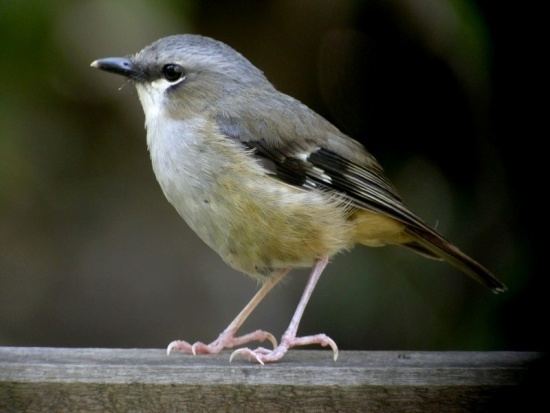 | ||
Similar Pale‑yellow robin, White‑browed robin, Ashy robin, Mangrove robin, Lemon‑bellied flyrobin | ||
Grey headed robin call and at nest
The grey-headed robin (Heteromyias cinereifrons) is a species of bird in the family Petroicidae. It is found in northeastern Cape York Peninsula.
Contents
- Grey headed robin call and at nest
- Grey headed robin heteromyias cinereifrons
- Taxonomy
- Description
- Distribution and habitat
- Breeding
- References
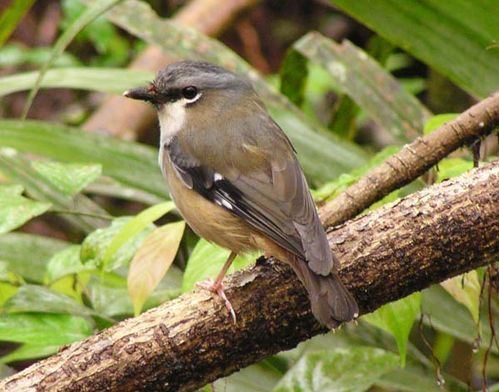
Grey headed robin heteromyias cinereifrons
Taxonomy
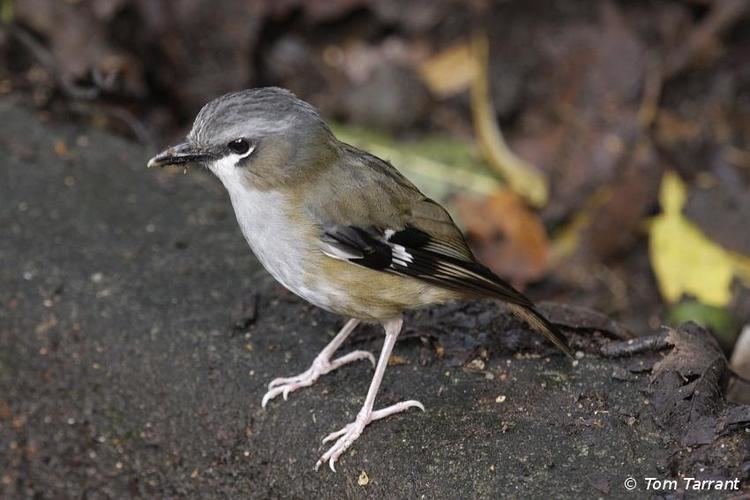
It is one of two species within the genus Heteromyias. Previously it and the ashy robin from New Guinea were treated as one species and known as Heteromyias albispecularis. Described by Australian naturalist Edward Pierson Ramsay in 1876, the grey-headed robin is a member of the Australasian robin family Petroicidae, or Eopsaltridae. Sibley and Ahlquist's DNA-DNA hybridisation studies placed this group in a Corvida parvorder comprising many tropical and Australian passerines including pardalotes, fairy-wrens, honeyeaters and crows. However, subsequent molecular research (and current consensus) places the robins as a very early offshoot of the Passerida, or "advanced" songbirds, within the songbird lineage.
Description
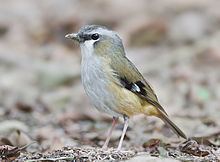
The grey-headed robin has, as its name suggests, a grey crown and lores, white throat and olive-brown ear coverts and upperparts, with a white patch on the wings. The underparts are pale, the breast pale grey and belly white. The bill and eyes are dark brown.
Distribution and habitat
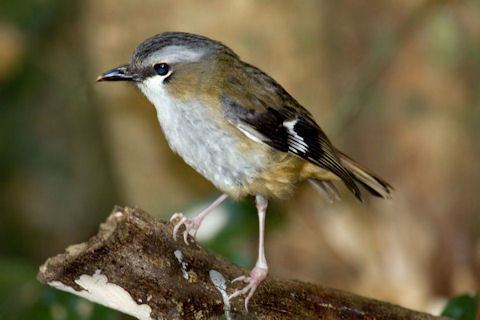
It is endemic to Queensland in Australia. The range in Australia is from Cardwell to the Bloomfield River in northeastern Queensland. Its natural habitats are subtropical or tropical moist lowland forests and subtropical or tropical moist montane forests.
Breeding
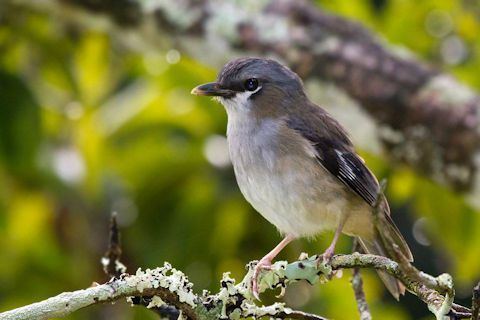
Breeding occurs from August or September to January, with one or two broods per season. The nest is a shallow cup made of bark, grass and dry leaves. Spider webs are used for binding or filling, and strips of fern and palm for lining the outside is decorated by dried vegetation. The nest is generally placed in a lawyer vine up to 10 m (30 ft) above the ground. A clutch of one or two eggs is laid. The eggs are buff, cream- or dark greenish-white, and marked with light brown splotches and spots, usually concentrated around the large end, and measure 26 by 19 mm.
